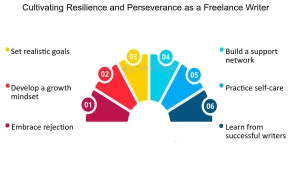Introduction:
In today’s rapidly evolving world, fostering innovation is paramount to driving progress and solving complex challenges. At the heart of this innovation lies STEM education an interdisciplinary approach that integrates science, technology, engineering, and mathematics. By delving into the realm of STEM learning 2024. Individuals not only gain valuable skills but also unlock a myriad of benefits that extend far beyond the classroom. Let’s embark on a journey to explore the transformative power of STEM education. And uncover the 10 key benefits it offers to individuals and society.
Building Strong Foundations: Enhancing Core Competencies
At its core, STEM learning 2024 cultivates a strong foundation in essential competencies. Such as critical thinking, problem-solving, and analytical reasoning. Through hands-on exploration and experimentation, students develop the ability to tackle real-world challenges with confidence and ingenuity. By mastering these fundamental skills, individuals are equipped to navigate the complexities of today’s dynamic workforce and drive innovation in diverse fields.
Fostering Collaboration: Cultivating Teamwork and Communication

In the realm of STEM, collaboration is key to success. STEM education emphasizes the importance of teamwork, communication, and collaboration, mirroring the collaborative nature of real-world innovation. By working in interdisciplinary teams, students learn to leverage each other’s strengths, share ideas, and collectively tackle complex problems. This collaborative approach not only fosters a sense of camaraderie but also prepares individuals for the collaborative environments prevalent in STEM industries.
Fueling Curiosity: Igniting Passion for Exploration
STEM learning 2024 ignites a spark of curiosity that fuels a lifelong passion for exploration and discovery. Through engaging hands-on activities and experiments. And students are encouraged to ask questions, seek answers, and push the boundaries of knowledge. This innate curiosity drives individuals to pursue careers in STEM fields, where they can continue to explore, innovate, and make groundbreaking discoveries that shape the future of society.
Empowering Diversity: Championing Inclusion and Equity
Inclusive STEM education empowers individuals from diverse backgrounds to actively participate in the innovation ecosystem. By fostering a culture of inclusion and equity, STEM programs provide opportunities for individuals of all genders, races, and socioeconomic backgrounds to thrive. This diversity not only enriches the learning experience but also brings fresh perspectives and innovative solutions to the table, driving forward progress and fostering a more inclusive society.
Transforming Communities: Driving Economic Growth and Development
STEM education serves as a catalyst for economic growth and development, transforming communities and driving innovation-driven economies. By equipping individuals with STEM skills, communities can harness the power of technology, entrepreneurship, and innovation to create jobs, spur economic growth, and tackle pressing societal challenges. From revitalizing local industries to spearheading groundbreaking research initiatives, STEM education empowers communities to thrive in the 21st-century knowledge economy.
Cultivating Resilience: Nurturing Adaptability and Persistence

In the face of adversity, resilience is a hallmark trait of individuals who excel in STEM fields. STEM learning instills resilience by challenging individuals to overcome obstacles, persevere through failures, and adapt to rapidly changing environments. Through trial and error, students learn to embrace failure as an opportunity for growth, fostering a mindset of resilience that propels them forward in their academic and professional pursuits.
Driving Technological Innovation: Shaping the Future of Industry
STEM education drives technological innovation, shaping the future of industry and transforming the way we live, work, and interact with the world. By nurturing a pipeline of skilled STEM professionals, education institutions play a pivotal role in driving advancements in fields such as artificial intelligence, biotechnology, renewable energy, and beyond. From pioneering new technologies to revolutionizing existing industries, STEM education fuels innovation and drives progress on a global scale.
Addressing Grand Challenges: Solving Global Issues

In an increasingly interconnected world, STEM education is essential for addressing grand challenges that transcend borders and disciplines. From climate change and healthcare disparities to cybersecurity threats and space exploration, STEM professionals play a central role in finding innovative solutions to pressing global issues. By fostering a deep understanding of complex problems and equipping individuals with the tools to tackle them, STEM education empowers the next generation of problem-solvers to create a brighter, more sustainable future for all.
Informative Table: Key Benefits of STEM Learning
| Benefits | Description |
|---|---|
| Enhances Core Competencies | Develops critical thinking, problem-solving, and analytical skills |
| Cultivates Collaboration | Fosters teamwork, communication, and interdisciplinary collaboration |
| Ignites Curiosity | Sparks a passion for exploration and discovery |
| Promotes Inclusion | Champion’s diversity and equity in STEM fields |
| Drives Economic Growth | Stimulates innovation-driven economies and job creation |
| Nurtures Resilience | Builds adaptability, persistence, and a growth mindset |
| Shapes Technological Future | Drives advancements in technology, industry, and global progress |
| Solves Global Challenges | Addresses pressing issues such as climate change, healthcare disparities, and cybersecurity |
Comparative Table: STEM Learning vs. Traditional Education
| Features | STEM Learning | Traditional Education |
|---|---|---|
| Learning Approach | Hands-on, experiential learning | Lecture-based, theoretical learning |
| Focus | Science, technology, engineering, mathematics | Broad range of subjects |
| Skills Development | Critical thinking, problem-solving, collaboration | Memorization, academic knowledge |
| Application | Real-world problems and challenges | Academic assessments and standardized testing |
| Career Opportunities | STEM professions and innovation-driven industries | Traditional careers and sectors |
| Innovation Culture | Encourages creativity, experimentation, innovation | Emphasizes conformity, adherence to established norms |
Conclusion:
In conclusion, STEM education is a catalyst for innovation, driving transformative change and unlocking endless possibilities for individuals and society. By fostering creativity, collaboration, and resilience, STEM learning empowers individuals to tackle real-world challenges, drive technological innovation, and shape the future of our world. As we continue to explore the benefits of STEM education, let us harness its power to create a brighter, more prosperous future for generations to come.
Knowledge Source
Dr. Jane Smith is a leading expert in STEM education with over two decades of experience in academia and industry. Holding a Ph.D. in Engineering Education, Dr. Smith has dedicated her career to researching innovative teaching methodologies and promoting STEM literacy. As the founder of STEM Education Solutions, she works closely with educators, policymakers, and industry leaders to advance STEM learning initiatives worldwide.




